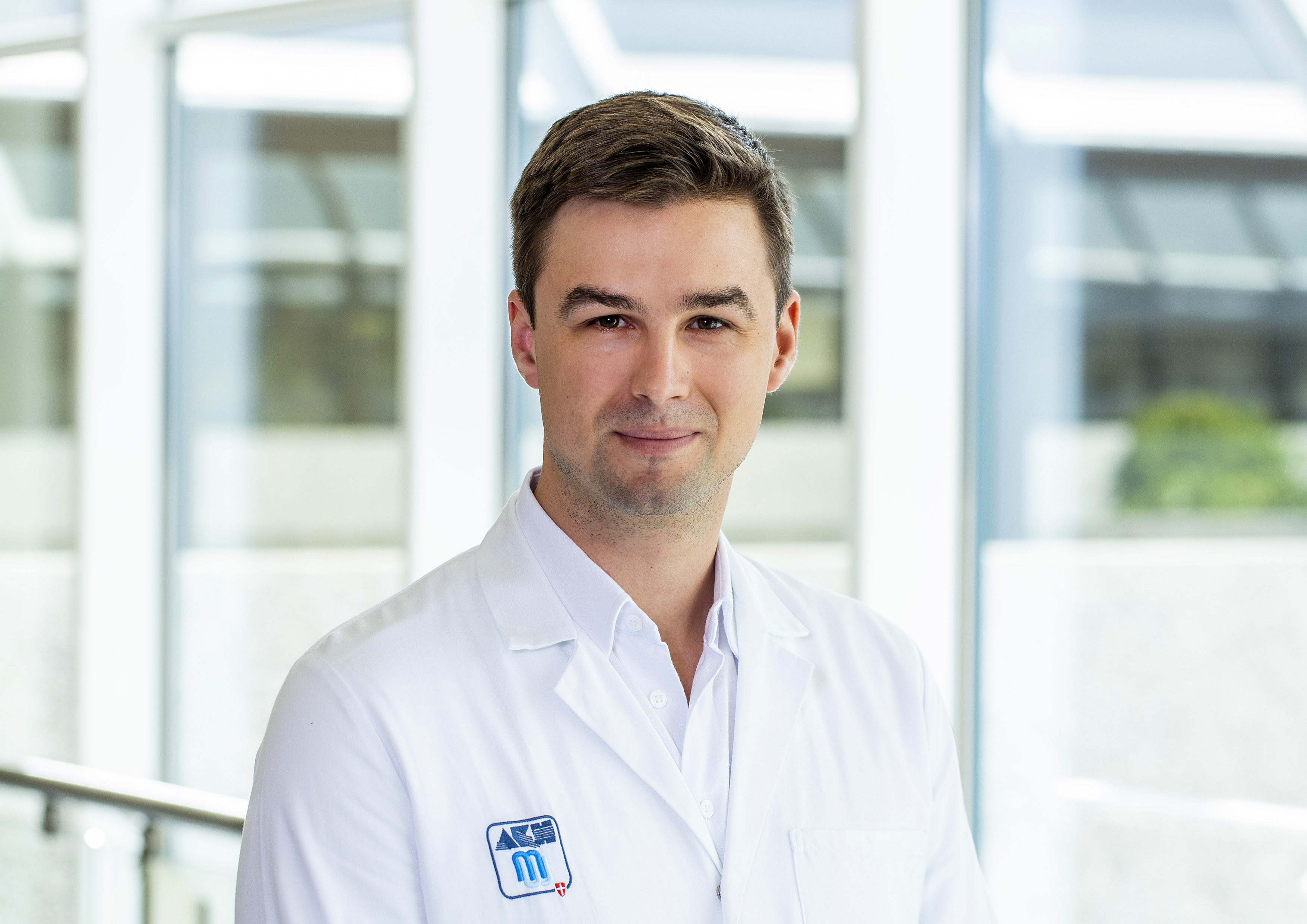
(Vienna, 03-04-2023) The journal „Diseases of Colon & Rectum" has bestowed the DCR Altmetric Award to the interdisciplinary work of a research team led by Stanislaus Argeny from MedUni Vienna's General Surgery Department. The paper is entitled "Laparoscopic Sacral Mesh Fixation for Ventral Rectopexy: Clinical Implications from a Cadaver Study".
Stanislaus Argeny wrote the research paper under the supervision of Stefan Riss from the University Clinic for General Surgery and together with the Centre for Anatomy and Cell Biology, the University Department of Gynaecology and the Department of Colorectal Surgery at Oxford University Hospitals.
Laparoscopic mesh rectopexy is a minimally invasive surgical procedure used to treat rectal prolapse. A tiny camera and special surgical instruments are inserted through small incisions in the abdomen. A synthetic mesh is sewn to the anterior wall of the rectum and attached internally. This corrects the rectal prolapse and returns the rectum to its normal position. As the surgery is minimally invasive, the pain and recovery time are usually less than with open surgical procedures.
In the study published in the journal "Diseases of Colon & Rectum" DCR, a laparoscopic mesh rectopexy with fixation of the plastic mesh to the sacral promontory was performed on body specimens. The study was able to show for the first time that the position of the fixation varies greatly and that injury to the hypogastric nerves is possible. The team clearly shows that an anatomical study is useful prior to the introduction of a new surgical method in order to better assess the risks of surgery.
The DCR Altmetric Award will be presented at the annual meeting of the American Society of Colon and Rectal Surgeons (ASCRS) in Seattle.
Publication: Diseases of Colon & Rectum
Laparoscopic Sacral Mesh Fixation for Ventral Rectopexy: Clinical Implications from a Cadaver Study
Stanislaus Argeny, Maximillian Zaussinger, Barbara Maurer-Gesek, Wolfgang J. Weninger, Andrea G. Maier, Lukas F. Reissig, Wolfgang Umek, Nikolaus Veit-Rubin, Oliver M. Jones, Anton Stift, Stefan Riss